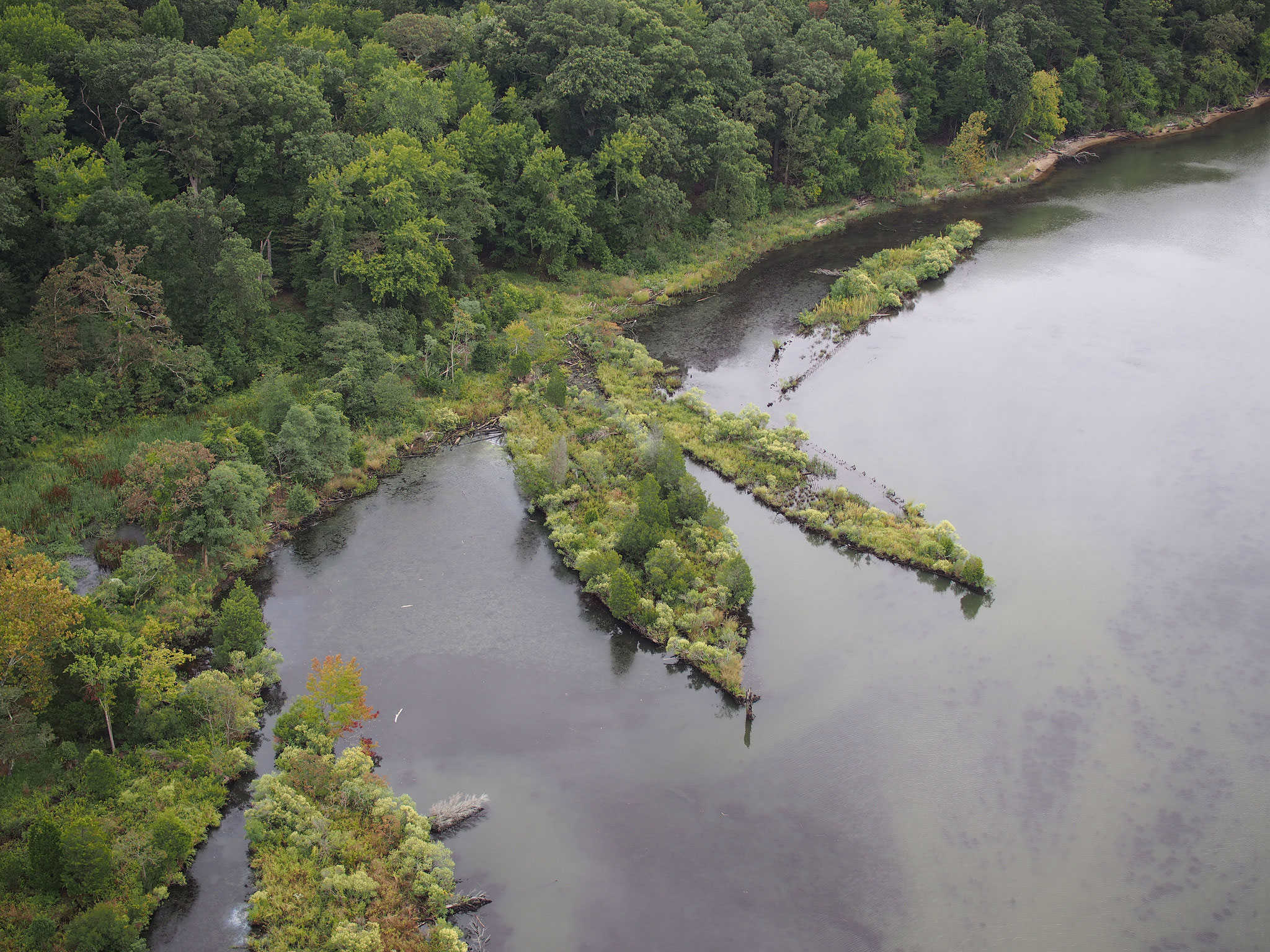Share this article
Wildlife Featured in this article
- Red fox
- Gray wolf
- Beaver
- Moose
- American marten
Wolf influx on Isle Royale only temporarily affects mesocarnivores
Foxes and martens changed their range and behavior after wolves moved back into Isle Royale
Wolf recolonization curtails mescocarnivore numbers on an island in the Great Lakes—but the effect doesn’t last.
“The return of wolves created this really strong effect initially,” said Mauriel Rodriguez Curras, now a postdoctoral researcher in environmental science at the University of California-Berkeley.
The small population of wolves (Canis lupus) on Isle Royale in Michigan may be among the most studied canids in North America. Researchers’ interest is partly due to the unique conditions the island presents—it’s a relatively closed system, with only the occasional animal coming across the lake during years when it completely freezes over. Since this doesn’t happen often, Isle Royale acts like a natural laboratory for a closed ecosystem, where researchers can track the large animals that they reintroduce or that occasionally cross over naturally.
The island has also gone through significant fluctuations in the past two decades. Wolves were once absent from Isle Royale but crossed Lake Superior when it was frozen over in the mid-20th century. Population numbers eventually died down until 2018 when the wolves were functionally extirpated, with only two severely inbred wolves left. In 2019, another 19 wolves were reintroduced from Minnesota, Ontario’s Michipicoten Island and Michigan’s Upper Peninsula to build back a healthy population.
A number of other species also inhabit the island. Jonathan Pauli, a professor of wildlife ecology at the University of Wisconsin-Madison, had been tracking American martens (Martes americana) on Isle Royale for years—these small carnivores had recolonized the island in the 1990s. Pauli supervised Rodriguez Curras’s PhD work at the University of Wisconsin-Madison, which focused more on red foxes (Vulpes vulpes) on Isle Royale.
In a study published recently in Frontiers in Ecology and the Environment, the research team examined how the most recent wolf reintroduction affected the behavior and number of foxes and martens on the island.
The research team collected data on foxes and martens from 2018—the year that wolves were functionally extirpated from the island—through 2020, after wolves had settled in.

They conducted stable isotope analysis of hair collected from martens and foxes around the island to determine what the animals were eating. They also collected and genotyped scat on the island to determine where foxes and martens were appearing. That information was fed into an occupancy model and demographic model.
The researchers then used GPS collars to determine where the wolves were occurring.
The initial shake-up
The researchers saw the biggest effect of wolves on mesocarnivores in 2019.
“The initial introduction really did shake up the distribution and the behaviors of those small carnivores,” Pauli said.

Foxes, the larger of the two mesocarnivores, were most negatively affected. At the beginning of their reintroduction, the wolves tended to displace foxes from prime locations. Without foxes to compete with them for food—or to even kill them as a result of competition—marten numbers and range sizes increased.
The researchers also examined the stable isotope ratios of the hair to determine whether there were changes in diet for the mesocarnivores after wolf reintroduction.
The behavior of all three animals also changed. This suggests that the reintroduction of wolves shook up the system. For wolves, there were high movement rates in 2019 compared to the following year. The canids also ate more beavers (Castor canadensis) than they normally would as they went—they typically prey more on moose (Alces alces) in this ecosystem type. The researchers believe the high beaver exploitation is partly due to the wolves not developing a regular strategy for hunting moose in the first year.

The new normal
By 2020, these effects had settled down. Fox range increased again and numbers went up, while marten range and numbers did the opposite and returned to normal levels. Meanwhile, wolves didn’t prey on beavers as much, focusing their attention on moose.
Pauli said this is likely a response to the wolf population settling into a more predictable pattern after its first year of relative chaos.
“A lot of those effects relaxed as wolves began to form those social dynamics,” Pauli said.
There was also another factor that affected the carnivore community: humans. Both wolves and martens typically stay away from humans, while foxes are well-adapted to take advantage of some of the extra resources that humans may provide, whether it’s garbage left behind or directly feeding the creatures.
“Foxes are really good at exploiting human habitats,” Rodriguez Curras said.
Header Image: Red foxes were initially affected by translocated wolves. Credit: Mauriel Rodriguez Curras








